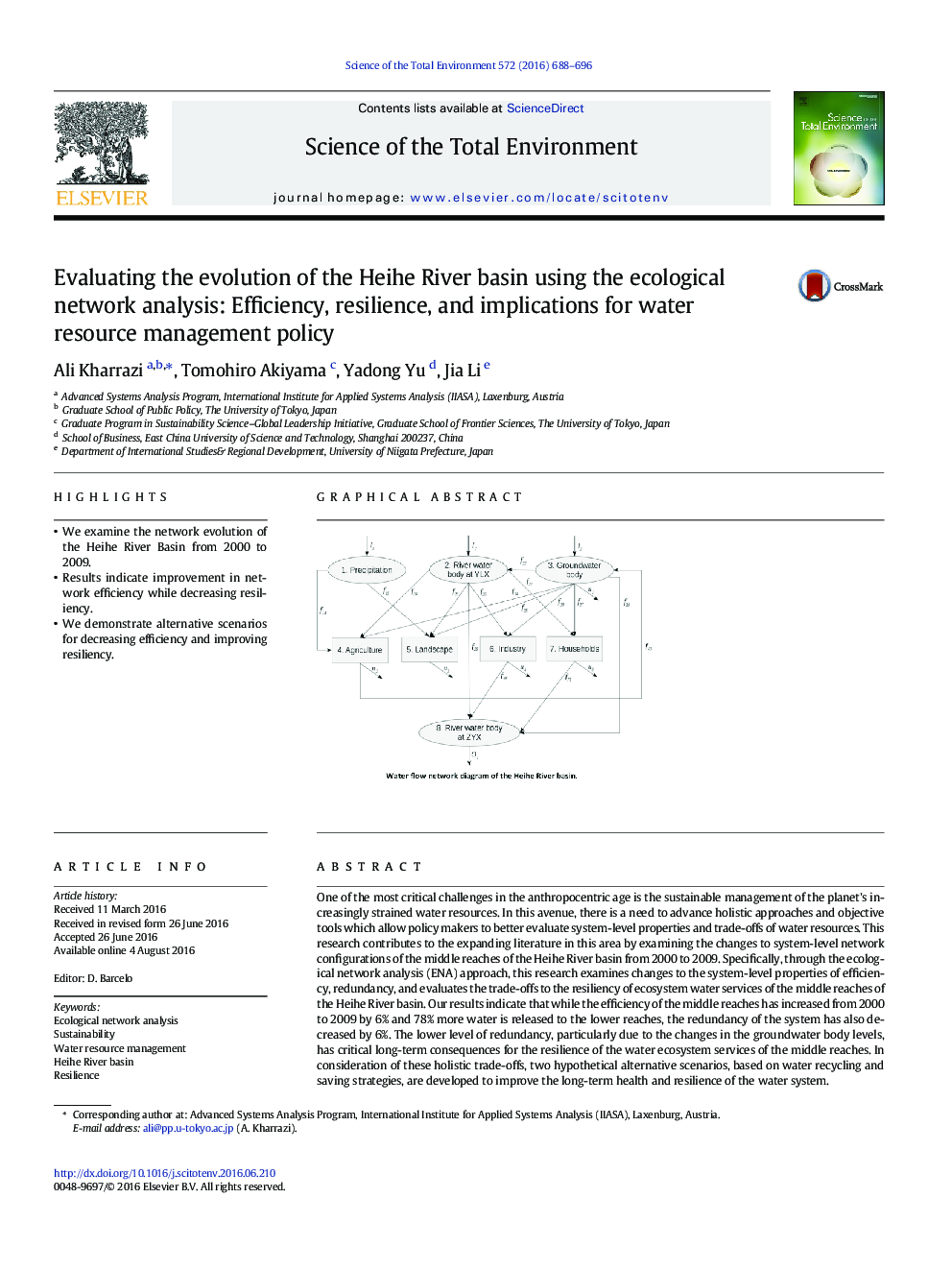| Article ID | Journal | Published Year | Pages | File Type |
|---|---|---|---|---|
| 6320654 | Science of The Total Environment | 2016 | 9 Pages |
â¢We examine the network evolution of the Heihe River Basin from 2000 to 2009.â¢Results indicate improvement in network efficiency while decreasing resiliency.â¢We demonstrate alternative scenarios for decreasing efficiency and improving resiliency.
One of the most critical challenges in the anthropocentric age is the sustainable management of the planet's increasingly strained water resources. In this avenue, there is a need to advance holistic approaches and objective tools which allow policy makers to better evaluate system-level properties and trade-offs of water resources. This research contributes to the expanding literature in this area by examining the changes to system-level network configurations of the middle reaches of the Heihe River basin from 2000 to 2009. Specifically, through the ecological network analysis (ENA) approach, this research examines changes to the system-level properties of efficiency, redundancy, and evaluates the trade-offs to the resiliency of ecosystem water services of the middle reaches of the Heihe River basin. Our results indicate that while the efficiency of the middle reaches has increased from 2000 to 2009 by 6% and 78% more water is released to the lower reaches, the redundancy of the system has also decreased by 6%. The lower level of redundancy, particularly due to the changes in the groundwater body levels, has critical long-term consequences for the resilience of the water ecosystem services of the middle reaches. In consideration of these holistic trade-offs, two hypothetical alternative scenarios, based on water recycling and saving strategies, are developed to improve the long-term health and resilience of the water system.
Graphical abstractDownload high-res image (122KB)Download full-size image
